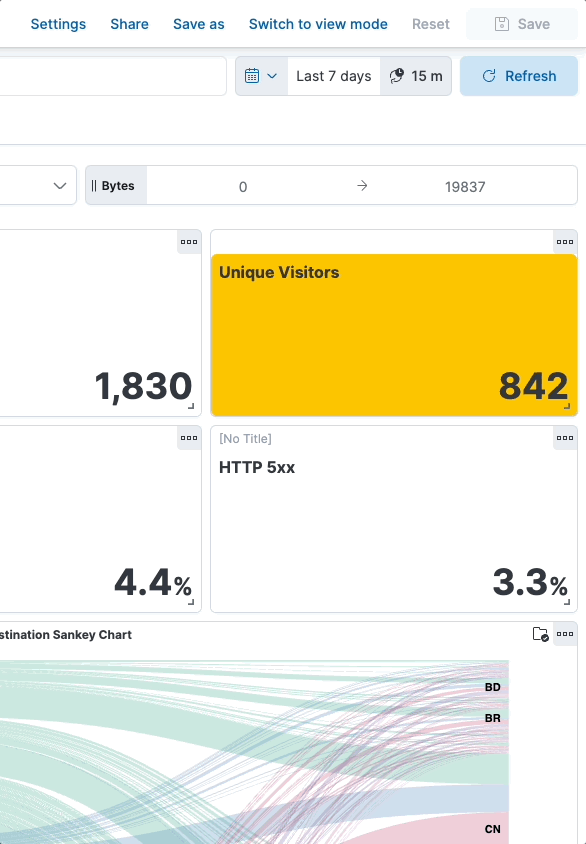IMPORTANT: No additional bug fixes or documentation updates
will be released for this version. For the latest information, see the
current release documentation.
Create a dashboard
edit
IMPORTANT: This documentation is no longer updated. Refer to Elastic's version policy and the latest documentation.
Create a dashboard
edit- Open the Dashboards page in Kibana.
-
Select Create dashboard to start with an empty dashboard.
When you create a dashboard, you are automatically in edit mode and can make changes to the dashboard.
-
Add content to the dashboard. You have several options covered in more detail in the Visualizations section:
- Create visualization. This option is a shortcut to create a chart using Lens, the default visualization editor in Kibana.
- Add panel. Choose one of the available panels to add and configure content to your dashboard.
- Add from library. Select existing content that has already been configured and saved to the Visualize Library.
-
Controls. Add controls to help filter the content of your dashboard.

- Organize your dashboard by organizing the various panels.
-
Define the main settings of your dashboard from the Settings menu located in the toolbar.
- A meaningful title, description, and tags allow you to find the dashboard quickly later when browsing your list of dashboards or using the Kibana search bar.
-
Additional display options allow you unify the look and feel of the dashboard’s panels:
- Store time with dashboard — Saves the specified time filter.
- Use margins between panels — Adds a margin of space between each panel.
- Show panel titles — Displays the titles in the panel headers.
- Sync color palettes across panels — Applies the same color palette to all panels on the dashboard.
- Sync cursor across panels — When you hover your cursor over a time series chart or a heatmap, the cursor on all other related dashboard charts automatically appears.
- Sync tooltips across panels — When you hover your cursor over a Lens chart, the tooltips on all other related dashboard charts automatically appear.
-
Click Apply.

- Click Save to save the dashboard.